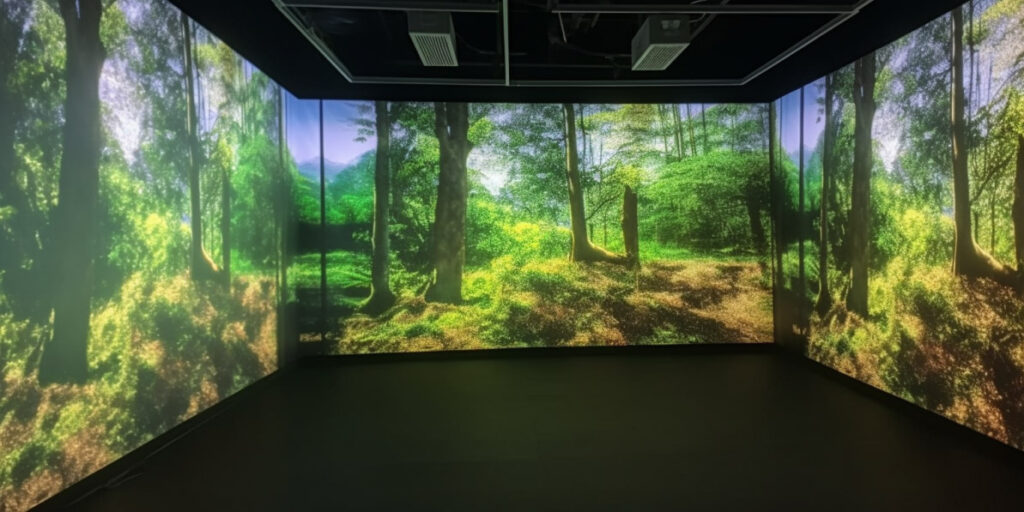Are your displays failing to deliver the impact you anticipated? The culprit might be improper placement. When positioned correctly, LED technology is a powerful tool, but poor placement can significantly compromise its effectiveness. The key to maximizing the potential of LED equipment lies in optimizing viewing angles. These angles determine the range within which images appear sharp and clear. Achieving an optimal viewing angle ensures that every viewer, regardless of their position, enjoys the same immersive experience.
Picture a stadium where only a fraction of the audience can clearly see the LED wall; this undermines the intended message. Similarly, in corporate or commercial settings, reduced visibility diminishes engagement, diverts attention, and, in extreme cases, may even cause eye fatigue. This article explores how to achieve ideal viewing angles for LED panels. We’ll provide practical advice and highlight key considerations to ensure a successful installation.
Understanding Viewing Angles in LED Screens
Before diving into placement strategies, it’s crucial to understand what viewing angles are and how they impact image quality.
- What Are Viewing Angles?
In technical terms, the viewing angle refers to the range within which colors, contrast, and sharpness remain consistent. Viewing angles are measured both horizontally (left and right of the viewer) and vertically (up and down).
- Why Viewing Angles Matter
A wide viewing angle ensures that all attendees, no matter their position, enjoy a crisp, vibrant image, enhancing engagement. Conversely, narrow viewing angles can lead to distortions, reduced contrast, and color saturation changes.
Typical viewing angles range between 140° and 160°, enabling viewers to move significantly without noticeable image degradation.
However, these values depend on the quality of the LED components.
LED screens panels are employed across various environments:

To attract customers and present products dynamically.

LED displays for sports are used to showcase replays, statistics, and animations.

To monitor multiple data sources simultaneously.
Technical Factors Influencing Visual Coverage
To fully optimize the visual coverage of LED displays, understanding the technical factors that influence viewing angles is essential.
Pixel Pitch (PP): The distance between individual LED pixels. Smaller pixel pitches typically yield better viewing angles and smoother, more detailed images. Low PP displays are ideal for close viewing and immersive experiences.
Panel Calibration: Proper calibration ensures consistent performance across the display, maintaining balanced brightness and vibrant colors regardless of viewing angles.
Specialized Coatings: High-quality coatings reduce glare, which is especially important in well-lit environments. Investing in premium displays from reputable suppliers ensures optimal results.
How Installation Methods Affect Audience Visibility Range
The LED technology installation plays a pivotal role in determining the audience’s visibility range. Let’s analyze three popular approaches:
- Ground-Supported Installation
- Ideal for temporary setups, such as trade shows or concerts, offering flexibility in height adjustments to match audience sightlines.
- For venues with low ceilings, ground-supported installations are often the best option.
- Flown Method Installation
- Best for crowded spaces or events with varied audience positions, as it minimizes obstructions from furniture or stage elements.
- Requires precise tilting to avoid distortion at extreme angles and rigorous compliance with safety standards for rigging equipment.
- Wall-Mounted Installation
- Perfect for permanent setups in environments like conference rooms, retail stores, or control rooms, where audiences are typically close to the display.
- While less flexible, wall-mounted installations are space-efficient and provide a sleek, professional appearance.
Other Effective Practices for LED Video Wall Placement
Beyond technical considerations, these best practices can enhance the overall visual experience:
- In high-traffic areas, such as shopping malls or lobbies, place LED screens at or slightly above eye level to maximize visibility without causing strain.
- In spaces with multiple access points, segmented video walls ensure optimal visibility for all viewers.
- LED Modular panels allow for customization in size and orientation, adapting to irregular or obstructed spaces.
- Precise alignment of modules eliminates visible seams, creating a seamless display. Modular designs also simplify maintenance and reduce downtime by enabling individual component replacement.
Why Proper Viewing Angle Optimization Matters
Optimizing the viewing angle of your LED setup is an investment in your project’s success, delivering benefits such as:
- Enhanced audience satisfaction: Through distortion-free, vibrant images.
- Increased engagement: Driving deeper interaction with your message or brand.
- Higher ROI: Amplifying the impact of marketing and communication campaigns.
To achieve optimal results, partnering with experts is crucial. Companies like Mirackle offer:
- Tailored solutions to meet your project’s unique needs.
- High-quality, durable LED products.
- Professional guidance for ideal placement and configuration.


